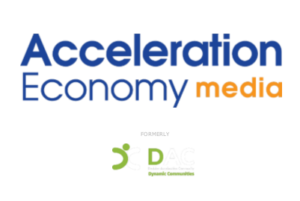Tracking report usage pre upgrade in 2009R2 RTC
-
Tracking report usage pre upgrade in 2009R2 RTC
Posted by Rodney Mumaw on January 11, 2017 at 4:07 pm-
Looking for a way to track report usage in 2009R2 RTC.
——————————
Rodney Mumaw
Master Meter
Mansfield TX
—————————— -

Vytenis Jakas
MemberJanuary 12, 2017 at 3:24 AM
Hello Rodney,We have a small NAV modification that does exactly that. It would need to be put on the system and left there for some time during normal everyday usage.
If you’d be interested, please contact me and we will send it to you.
Regards,
——————————
Vytenis Jakas
B3 Technologies
——————————
——————————————- -
Here is a Microsoft blog post that outlines how to accomplish this in NAV 2009. It was originally used to track report usage to determine what reports needed to be converted to RDLC.
Updated: How to log report usage
Dynamics NAV Team Blog remove preview 
Updated: How to log report usage Updated: Now with links to both NAV 5.0 and NAV 2009 hotfixes /Claus Lundstrøm ****** In several partners meetings I have heard this requests over and over again. Claus, when we are planning an upgrade of Classic reports to RDLC reports, we do not always know which reports are actually being used at the customer… View this on Dynamics NAV Team Blog > ——————————
Andrew Good
President
Liberty Grove Software
Oakbrook Terrace IL
——————————
——————————————- -

Jeff Rassie
MemberJanuary 12, 2017 at 5:47 PM
Rodney,If I recall correctly from 2-3 years ago, I think it’s 1Click that has a software utility that can be installed on your NAV system and can track the number of times a specific custom report is run by end users. If you allow it to run for several months, it’s helpful in determining which end user custom reports need to be re-written when you upgrade.
One of my clients wanted something like this to determine which of their 200-300 custom reports their end users were still using to determine which of them they actually needed to re-write when they upgraded from NAV 2009 to NAV 2015.
If I’m correct in that 1Click is the correct vendor for this, but you have trouble reaching them send me an email and I’ll try to find a contact for you there to help.
I’m at Jeff.Rassie@westerncomputer.com
——————————
Jeff Rassie
Eastern Region CSM
Western Computer
Cleveland OH
——————————
——————————————- -

David Machanick
MemberJanuary 14, 2017 at 5:53 PM
1Click basically has a free version of the procedure described in the Microsoft blog.
They hope to get the upgrade work from your partner.
I have done a number of upgrades from NAV 2009 including ones I have done myself and running the ones provided from 1Click.
Besides what they reports, check any reports that are printed directly from forms that may not appear.
It is also a good time to examine your custom reports and decide if they are really necessary for your business and if any customized versions of the standard reports can either be consolidated or revert back to standard.
See if any of your reports can be better produced using a BI or Excel.——————————
David Machanick
Sikich LLP
Garland TX
——————————
——————————————-
Rodney Mumaw replied 8 years, 7 months ago 1 Member · 0 Replies -
-
0 Replies
Sorry, there were no replies found.
The discussion ‘Tracking report usage pre upgrade in 2009R2 RTC’ is closed to new replies.


